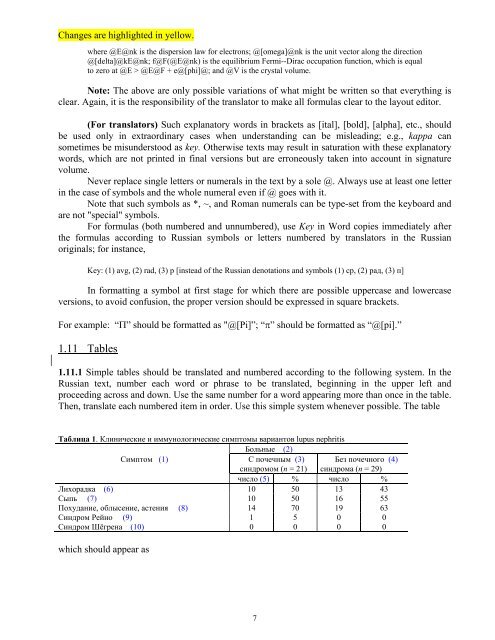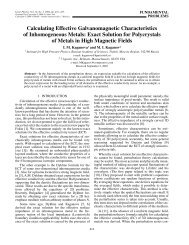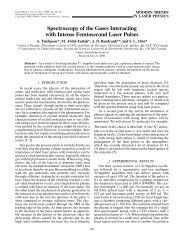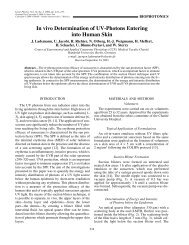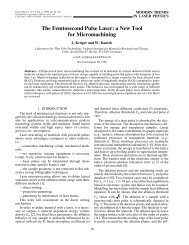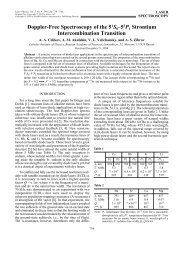House Style Guide 2011 - MAIK "Nauka/Interperiodica"
House Style Guide 2011 - MAIK "Nauka/Interperiodica"
House Style Guide 2011 - MAIK "Nauka/Interperiodica"
- TAGS
- maik
- www.maik.ru
Create successful ePaper yourself
Turn your PDF publications into a flip-book with our unique Google optimized e-Paper software.
Changes are highlighted in yellow.<br />
where @E@nk is the dispersion law for electrons; @[omega]@nk is the unit vector along the direction<br />
@[delta]@kE@nk; f@F(@E@nk) is the equilibrium Fermi--Dirac occupation function, which is equal<br />
to zero at @E > @E@F + e@[phi]@; and @V is the crystal volume.<br />
Note: The above are only possible variations of what might be written so that everything is<br />
clear. Again, it is the responsibility of the translator to make all formulas clear to the layout editor.<br />
(For translators) Such explanatory words in brackets as [ital], [bold], [alpha], etc., should<br />
be used only in extraordinary cases when understanding can be misleading; e.g., kappa can<br />
sometimes be misunderstood as key. Otherwise texts may result in saturation with these explanatory<br />
words, which are not printed in final versions but are erroneously taken into account in signature<br />
volume.<br />
Never replace single letters or numerals in the text by a sole @. Always use at least one letter<br />
in the case of symbols and the whole numeral even if @ goes with it.<br />
Note that such symbols as *, ~, and Roman numerals can be type-set from the keyboard and<br />
are not "special" symbols.<br />
For formulas (both numbered and unnumbered), use Key in Word copies immediately after<br />
the formulas according to Russian symbols or letters numbered by translators in the Russian<br />
originals; for instance,<br />
Key: (1) avg, (2) rad, (3) p [instead of the Russian denotations and symbols (1) ср, (2) рад, (3) п]<br />
In formatting a symbol at first stage for which there are possible uppercase and lowercase<br />
versions, to avoid confusion, the proper version should be expressed in square brackets.<br />
For example: “�” should be formatted as "@[Pi]”; “�” should be formatted as “@[pi].”<br />
1.11 Tables<br />
1.11.1 Simple tables should be translated and numbered according to the following system. In the<br />
Russian text, number each word or phrase to be translated, beginning in the upper left and<br />
proceeding across and down. Use the same number for a word appearing more than once in the table.<br />
Then, translate each numbered item in order. Use this simple system whenever possible. The table<br />
Таблица 1. Клинические и иммунологические симптомы вариантов lupus nephritis<br />
Больные (2)<br />
Симптом (1) С почечным (3)<br />
синдромом (n = 21)<br />
7<br />
Без почечного (4)<br />
синдрома (n = 29)<br />
число (5) % число %<br />
Лихорадка (6) 10 50 13 43<br />
Сыпь (7) 10 50 16 55<br />
Похудание, облысение, астения (8) 14 70 19 63<br />
Синдром Рейно (9) 1 5 0 0<br />
Синдром Шёгрена (10) 0 0 0 0<br />
which should appear as


